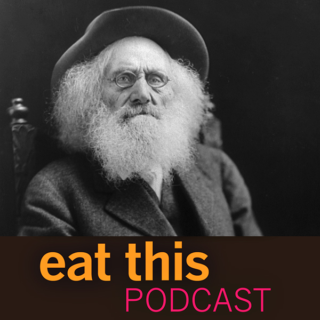
Podcast: Play in new window | Download (Duration: 27:56 — 22.6MB)
Subscribe: Google Podcasts | Spotify | Android | RSS | More
 Brewers have long appreciated the value of hops from the Pacific northwest, but it was Cascade, a variety practically synonymous with craft brewing, that made the area more generally famous among beer drinkers. Cascade was named for the Cascade Range, which runs down the west coast of North America. The home of the Cascade hop is the Willamette valley, roughly halfway between the mountains and the coast. Cascade was released in 1972, but the history of hops in the Willamette valley goes back to the 1830s. The industry has seen more than its fair share of ups and downs, all examined by historian Peter Kopp in his book Hoptopia.
Brewers have long appreciated the value of hops from the Pacific northwest, but it was Cascade, a variety practically synonymous with craft brewing, that made the area more generally famous among beer drinkers. Cascade was named for the Cascade Range, which runs down the west coast of North America. The home of the Cascade hop is the Willamette valley, roughly halfway between the mountains and the coast. Cascade was released in 1972, but the history of hops in the Willamette valley goes back to the 1830s. The industry has seen more than its fair share of ups and downs, all examined by historian Peter Kopp in his book Hoptopia.
The whole question of changing tastes in beer, and how that affects the fortunes of different hops, is fascinating. If you’ve been a listener forever, you may remember a very early Eat This Podcast, about the rediscovery of an English hop known prosaically as OZ97a. Deemed too hoppy and abandoned when first tried, the vogue for craft beers resurrected its fortunes. It’s a fun story, though I say so myself.
Notes
- Peter Kopp’s book is Hoptopia: A World of Agriculture and Beer in Oregon’s Willamette Valley.
- Cover photo is Ezra Meeker, the early grower of hops in the Willamette valley who pioneered the global marketing of Oregon hops. The booming hop business made him the territory’s first millionnaire, and perhaps also its biggest bust. Hop King: Ezra Meeker’s Boom Years chronicles that part of his long, rich life.
- Banner photo of hops by Paul on Flickr.

Listened to Hoptopia How the Willamette valley conquered the world of tasty beer by Jeremy Cherfas from Eat This Podcast
I know I’d listened to this a while back, but it is so dense it has a lot to unpack on so many fronts.
Syndicated copies to:
Listened to Hoptopia How the Willamette valley conquered the world of tasty beer by Jeremy Cherfas from Eat This Podcast
I had a roommate in college from the Czech Republic who fondly remembered spending time on hops farms picking what he called the county’s “green gold”. It’s interesting to think about the economic and cultural differences and norms built up around such a product. I hadn’t known that the Pacific Northwest figured so prominently in production and find it amazing that the economic timing for the industry was so fortuitous.
What a fantastic episode on all fronts.
Syndicated copies to:
So when was it that Guinness sourced its hops from Oregon? Any idea on volumes?
Guinness seems to have started using some American hops, sourced from English merchants, as early as the 1870s. In 1906, soon after Horst’s first delivery of hops from Oregon and Washington, the total American hops was 39,778 zentners, while English hops provided 33,425 zentners. I guess these are standard zentners of 50kg.
Thanks to Peter Kopp for sharing some of his references, especially Guinness and Hops by J.F. Brown (1980).
Essential listening for any #craftbeer #hopheads out there.
🍃🍃
Latest episode: Talking to Peter Kopp about the history of #hops in the Pacific northwest.
eatthispodcast.com/hoptopia
“#Hoptopia: A World of Agriculture and #Beer in Oregon’s #WillametteValley” @nmsu Assoc Prof and Director of #PublicHistory Peter A. Kopp speaks with @eatpodcast: